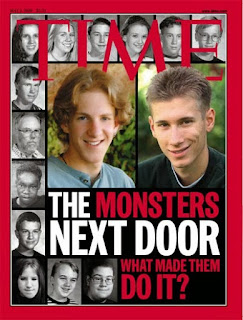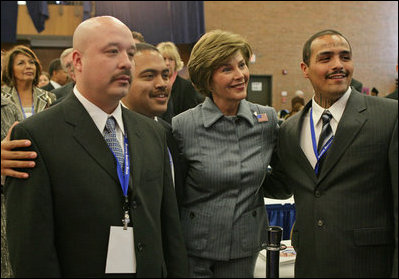What struck me the most in the film is his reality or his fake reality, the school shooting shown in the movie happened every day in the United States and by watching this film we have the impression to witness the true reconstitution of a rampage such as Columbine in 1999 or Sandy in 2012. During all the movie we know what is going to happened but we don't know how is going to happen. This film allows us to be inside a school shooting for the first time in cinema.
2) What also impressed you?
What impress me the most were the long shots without any cut at several moments of the film. Those 10 minutes shot allow us to have a view of the event from the perspective of several characters and give to the film a slow rythm which add a sort of suspense to the plot. So I'm really impress by the great quality of the direction which don't really surprise me from a film directed by Gus Van Sant a very good director.
3) Did you find anything more particularly upsetting?
I find very upsetting the fact that sometimes the director linger on very banal activities, like in the scene with the photograph, I know that he wants to show that this day is a normal one but he insists maybe too much on it.
4) What did you find very disturbing?
The thing that I find very disturbing is that we don't have main characters in this movie, the camera follows different characters but there is no pattern or common point between all the characters expect maybe the fact that they are all in the High School during the school shooting but the scenario can be very disturbing.
5) What was most shocking?
The most shocking is of course the scene of the rampage where the two shooters tracked the students in the corridors of the High School. The scene in the cold chamber that end the movie is very disturbing and very scary.
6) What does the film suggest about the two school shooters?
Firstable the film suggest that the two shooters are homosexual like the shooters of the Columbine shootings it's an other example of the similarity between the film and the true massacre in Columbine. Second the shooters are very nerdy and because of that they are being bullied in class. And finally we can say that the shooters are no monster, the director didn't want to give a manichean look on this event so we can see for example that one of the shooter has a musical sensibility.
7) What's more, what does the film director make clear about the two killers?
He makes very clear the fact that they are not mad or disturbed he avoids this scenaristic facility by saying that they doing this because of many factors and especially the easy access to weapon. The portrait of the killers is not manichean, they are not evil and the students are not completely good, this shooting is the result of many other facts like the lack of confidence, the bullying and like I said the gun industry in the United States.
8) What kind of approach to the school shooting itself did Gus Van Sant opt for?
The director opt for a very slow approach of the school shooting, we saw the killers at the very beginning but we see the shooting at the very end, it's not a chronological story. At the end where the shooting takes place, he is not shown entirely, we just see part of the shooting or important moments. Gus Van Sant avoids to show too much violence like when a student gets kill it's violent but not too much it is shown in a very realistic way.
9) Moreover, what's the main consequence of the realistic treatment he uses? What about the 'poetic' touches he instills throughout the film?
I find very upsetting the fact that sometimes the director linger on very banal activities, like in the scene with the photograph, I know that he wants to show that this day is a normal one but he insists maybe too much on it.
4) What did you find very disturbing?
The thing that I find very disturbing is that we don't have main characters in this movie, the camera follows different characters but there is no pattern or common point between all the characters expect maybe the fact that they are all in the High School during the school shooting but the scenario can be very disturbing.
5) What was most shocking?
The most shocking is of course the scene of the rampage where the two shooters tracked the students in the corridors of the High School. The scene in the cold chamber that end the movie is very disturbing and very scary.
6) What does the film suggest about the two school shooters?
Firstable the film suggest that the two shooters are homosexual like the shooters of the Columbine shootings it's an other example of the similarity between the film and the true massacre in Columbine. Second the shooters are very nerdy and because of that they are being bullied in class. And finally we can say that the shooters are no monster, the director didn't want to give a manichean look on this event so we can see for example that one of the shooter has a musical sensibility.
7) What's more, what does the film director make clear about the two killers?
He makes very clear the fact that they are not mad or disturbed he avoids this scenaristic facility by saying that they doing this because of many factors and especially the easy access to weapon. The portrait of the killers is not manichean, they are not evil and the students are not completely good, this shooting is the result of many other facts like the lack of confidence, the bullying and like I said the gun industry in the United States.
8) What kind of approach to the school shooting itself did Gus Van Sant opt for?
The director opt for a very slow approach of the school shooting, we saw the killers at the very beginning but we see the shooting at the very end, it's not a chronological story. At the end where the shooting takes place, he is not shown entirely, we just see part of the shooting or important moments. Gus Van Sant avoids to show too much violence like when a student gets kill it's violent but not too much it is shown in a very realistic way.
9) Moreover, what's the main consequence of the realistic treatment he uses? What about the 'poetic' touches he instills throughout the film?
The main consequence of this realistic approach we feel a lack of empathy towards the characters that are being involved in the shooting, we are shocked of course but because the director didn't present them very well we are not sad or less sad maybe. The poetic touches is where we can find the imprint of Gus Van Sant who like to tell his story in a certain poetical way, with long shots of landscape for example, in Elephant we can see that at some moments, the director uses slow motion to captured important scenes and we have a shot of the sky at various moments in the film.
10) As a conclusion, what must we admit about the way in which the killing and the killers are perceived by the film viewers?
To conclude I would say that in contrary with other film, at the end of the film we don't feel a strong anger against the killers of course we feel a bit of a disgust toward them but we don't see the shooters as only responsible for this massacre. And I think is what this film is all about, this film wants us to meditate on how a school shooting happen, of course we can say like many that the shooters in those events are monster and they are completely hopeless but it's a way to hide the truth. The director explains to us that a school shooter is create with different factors, and the main factor is of course the gun policy in America.













